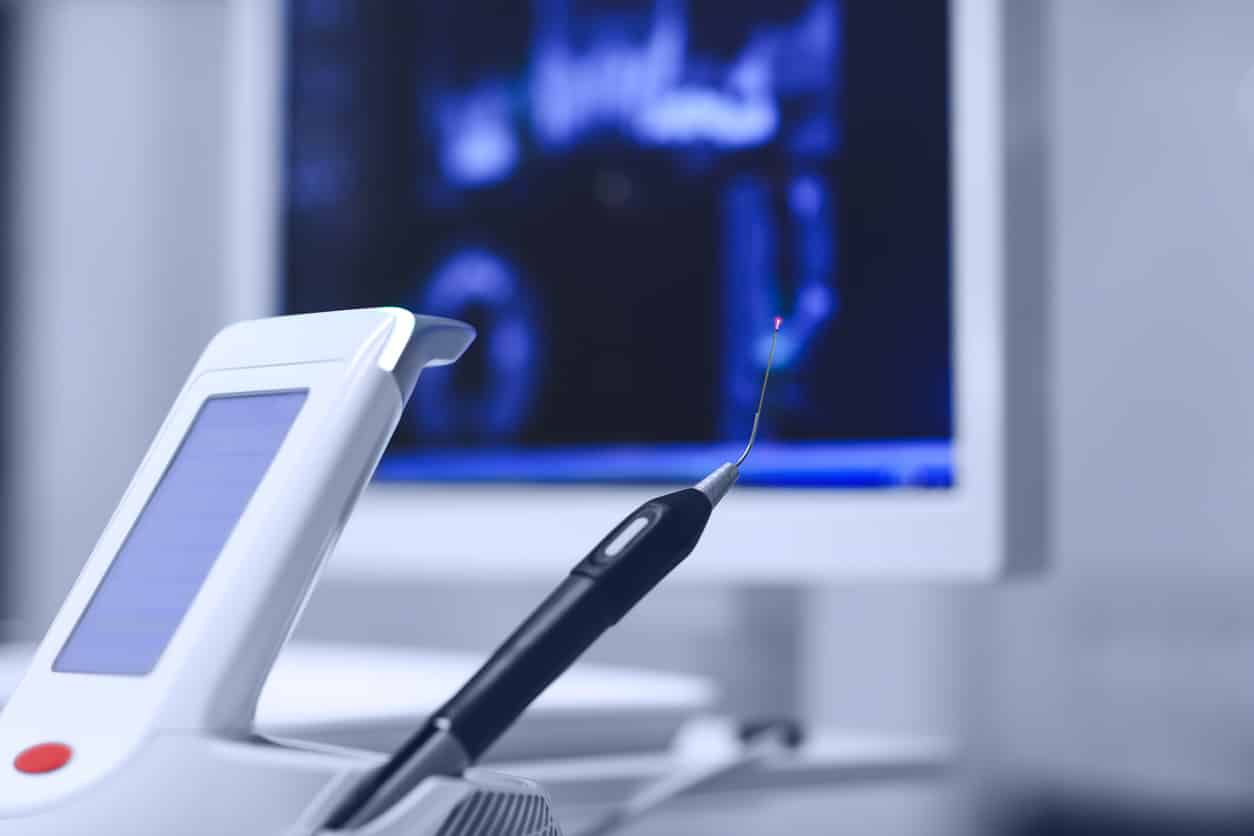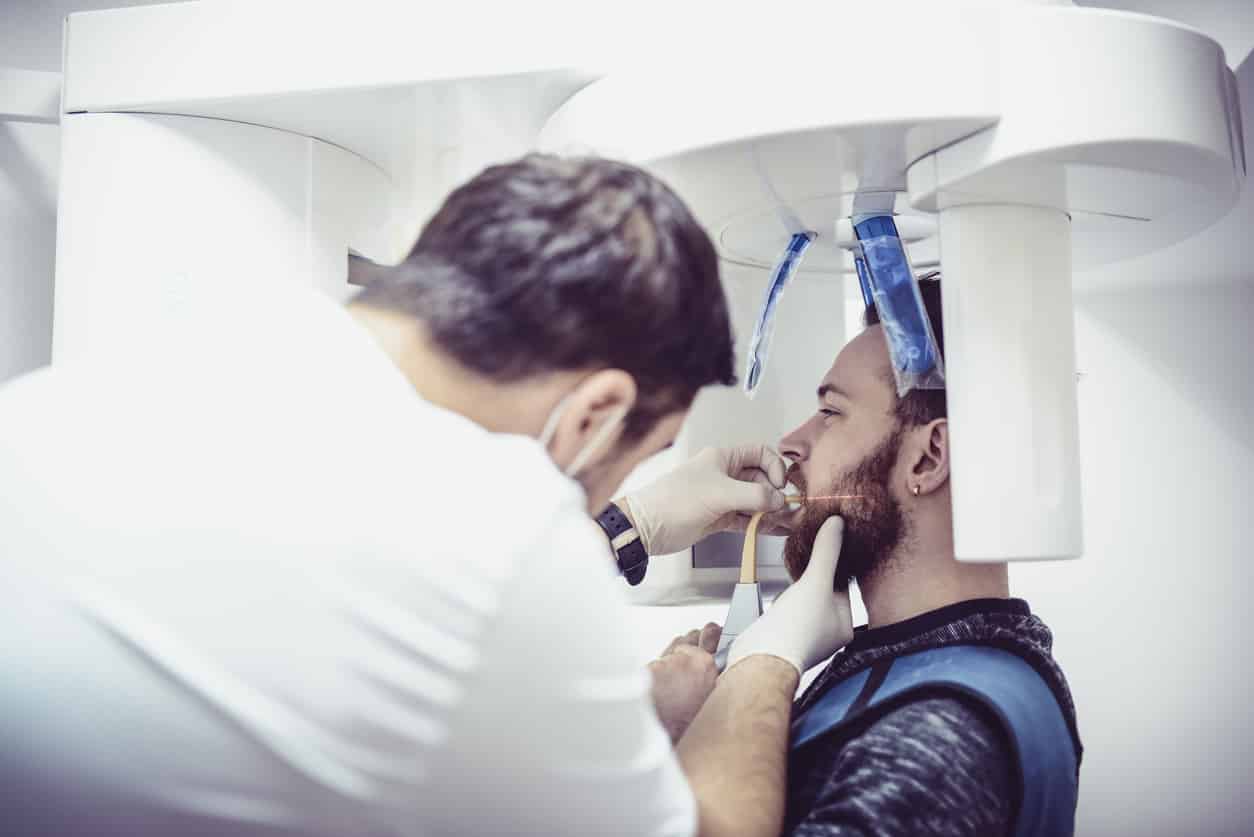Our dental health is of extreme importance. Once every six months or so, we find ourselves sitting in the dentist’s chair, getting our routine cleaning as well as anything else that is recommended at that time for a healthy mouth. Our doctors are often introducing us to the latest advanced dental treatments, one of them being laser dentistry. As an easy and effective way to maintain oral health, this treatment option is quickly rising in popularity for many reasons. Let’s take a look at the pros and cons of laser dentistry in order to become more familiar with the overall process and have a more in-depth understanding of what it entails.
What is Laser Dentistry?
As most people know, a laser produces a thin, intense beam of light. When used in dental procedures, a laser, or Light Amplification by Stimulated Emission of Radiation, is extremely effective. The treatment option is easy and can be completed in significantly less time than traditional treatment methods. Tissue can be reshaped or even removed by the use of a laser. Laser dentistry is an option that is used for several procedures, and it is minimally invasive and painless, making it a great choice for people who are nervous about visiting the dentist.
Types of Laser Treatments
There are two types of laser treatments that a dentist can perform, hard tissue and soft tissue. As expected, hard tissue treatments are those that refer to the teeth, while soft tissue treatments refer to the gums. Treatments using lasers are often more precise than traditional treatments. Hard tissue lasers are effective for cutting through the tooth structure and often used for prepping and bonding of the teeth. Lasers are highly effective for soft tissue management, and often used in periodontal treatment due to its effectiveness and ease.
What Procedures Can Use Laser Dentistry?
Laser dentistry is very often used for a number of procedures. Some of the most common hard and soft tissue procedures are as follows:
- Removal of Tooth Decay – the tooth decay is removed with the use of the laser, and the tooth is then prepared for the filling.
- Treatment of Gum Disease – the gums are reshaped and bacteria is removed with the use of the laser.
- Biopsy – a piece of tissue can easily be removed and examined as necessary.
- Teeth Whitening – perhaps one of the most common and easiest, the laser is used to speed up the process of whitening the teeth, resulting in a brighter and more beautiful smile.
- Wisdom Teeth – the wisdom teeth can be exposed through the use of a laser.
- Damaged Nerves – the damaged nerves can be regenerated through the use of a laser.
- Cavity Detection – lasers can be used to detect cavities in the mouth sooner than traditional methods.
- Muscle Attachment – a laser can be used to treat a tight frenulum, in a procedure commonly known as laser frenectomy. This is particularly useful in those with speech impediments.
- Sleep Apnea Treatment – this condition can be treated with the use of a laser by reshaping the throat, resulting in improved breathing.
- Removal of Tumors – benign tumors can be removed from different areas of the mouth by using a laser.
Is Laser Dentistry Safe?
One of the main concerns regarding laser dentistry is the safety of this treatment option. Many people are surprised to learn that it is extremely safe, perhaps even safer than the traditional method of using a tool. A slip of the tool can lead to discomfort and irritation, and this is not an issue with laser dentistry. The dentist protects the patient’s eyes from the laser beam, further increasing the safety of the treatment process. There is less of a risk of infection, less damage, and reduced healing time for patients. In addition, lasers are FDA approved, making them a safe option for dental use.
What is the Cost of Laser Dentistry?
The cost of laser dentistry can vary due to many factors, such as the type of treatment needed. Generally, a patient can expect to pay approximately $85.00 for a cleaning, up to approximately $400.00 for other types of treatments. Your dentist will inform you of the type of treatment that is needed for your specific case, as well as inform you of the associated cost.
What are the Pros and Cons of the Treatment Option?
As with any procedure, laser dentistry has advantages and disadvantages. The treatment is definitely less invasive and painful than traditional methods. The laser is also less anxiety-inducing than a drill, calming any fears that patients might have regarding the treatment. There is also less of a need for anesthesia or sutures after treatment done with a laser. Laser dentistry results in less bleeding. Also, there is a significantly lower risk of bacterial infection or tissue damage when laser dentistry is used as a treatment option.
In contrast, there are some disadvantages to this method of dental treatment. The high cost is a concern to some. If a particular tooth already has a filling, laser dentistry is not an option. In addition, while there is less of a need for anesthesia, the possibility is still there. Tooth pulp can be damaged by the use of a laser, and the teeth can’t be prepared for bridges or crown removal with this type of treatment.
As we can see, laser dentistry is highly effective. While there are some minor drawbacks, the advantages of the treatment option definitely outweigh the disadvantages. There are many procedures that can be performed with lasers, and this treatment option is easier and more effective than traditional treatment methods. At Esthetix Dental Spa, we understand that each patient has specific needs. That is why our team is dedicated to remaining focused on your specific concerns, giving you the confidence you need in order to know that the procedure will be successful. We have a variety of treatment options and are highly skilled in laser technology. For more information regarding laser dentistry, or to schedule an appointment, contact us today.









